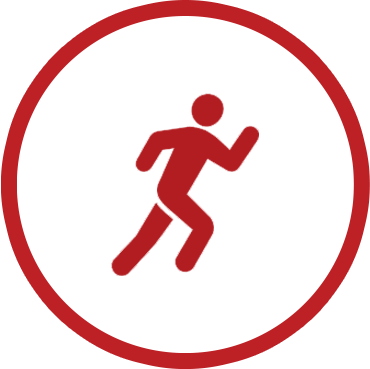About 6.5 million people in the United States live with peripheral artery disease (PAD).
Peripheral artery disease (PAD) is caused by plaque buildup (atherosclerosis) in the arteries leading to the lower extremities.
PAD occurs when atherosclerosis narrows the inner passageways of the arteries, restricting blood flow. This lack of adequate oxygen and nutrient-rich blood flow results in extra strain on the muscles and other tissues in the legs.
Peripheral artery disease causes symptoms like leg pain during exercise, slow-healing wounds or ulcers, and eventually leg pain at rest. Understanding peripheral artery disease risk factors can help you make lifestyle changes that can reduce your risk of PAD.
Common PAD Risk Factors
-
YOUR AGE
Are over the age of 50.
-
ARE MALE
While women can also develop PAD–with or without any symptoms–the disease predominantly affects men.
-
SMOKE OR USED TO SMOKE
Smokers and ex-smokers alike have up to four times greater risk of developing PAD.
-
HAVE DIABETES
One in every three people over the age of 50 with diabetes is likely to have PAD.
-
HAVE HIGH BLOOD PRESSURE
Also known as hypertension, high blood pressure significantly raises the risk of developing plaque in the arteries.
-
HIGH LEVELS OF CHOLESTEROL
Excess cholesterol and fat in your blood contribute to the formation of plaque in the arteries, reducing or blocking blood flow to your heart, brain, or limbs.
-
HISTORY OF VASCULAR DISEASE
Have a personal history of vascular disease, heart attack, or stroke. If you have heart disease, you have a one in three chance of also having PAD.
-
ARE AFRICAN AMERICAN
African Americans are more than twice as likely to have PAD as their white counterparts.
-
BUILDUP
Plaque buildup in the arteries.
What is the Biggest Risk Factor for Peripheral Artery Disease?
The main risk factor for PAD is smoking. Smoking is also one of the most significant risk factors for other vascular problems, such as coronary artery disease. Tobacco smoke contains chemicals that irritate the cells lining the blood vessels. This causes inflammation and narrowing of the blood vessels, making it easier for plaque to accumulate. The chemicals in tobacco smoke also make the blood thicker, increasing the risk of blood clots.
If you smoke, seek help to quit smoking right away. It’s never too late to quit smoking. The benefits of quitting include reduced cramping leg pain (intermittent claudication) and slowing the progression of PAD.
Who is at the Highest Risk of Developing PAD?
Along with smoking, people with Type 2 diabetes are at an increased risk of developing PAD.
To help decrease the risk of PAD, those with Type 2 diabetes can:
- Manage diabetes
- Quit smoking
- Start an exercise program
- Lower stress levels
- Control cholesterol levels
These actions can help improve your PAD outlook or decrease your risk of developing the condition. If you have one or more peripheral artery disease risk factors, lifestyle changes and treatment can help treat PAD symptoms and lower your risk of complications.
At USA Vascular Centers, we offer several ways to improve vascular health with minimally invasive, non-surgical PAD treatments.
- Angioplasty: widens narrowed arteries by inflating a balloon-tipped catheter in the clogged area
- Stent placement: helps keep the artery open by implementing an angioplasty followed by the placement of a mesh stent
- Atherectomy: breaks plaque into small pieces with a laser or tiny blade before safely removing it from the body
After treatment, it’s important to make lifestyle changes to improve your health. This can help you continue to lower your peripheral artery disease risk factors.
Lifestyle Changes to Prevent & Improve PAD
One in every 20 Americans over the age of 50 has Pheripheral Artery Disease (PAD), a condition that raises the risk for heart attack & stroke.

Quit Smoking
Request help from health care provider. They can develop an effective cessation plan for you.

Lower Your Numbers
Work with your health care provider to correct any high blood pressure, cholesterol, and blood glucose levels.

Exercise Regularly
Aim for 30 minutes of moderate intensity activity each day. Doing an activity you enjoy will motivate you to keep it up in the future.

Eat Healthy
Work with your health care provider to create a personalized diet plan to control your numbers.

Achieve a Healthy Weight
If you are overweight, work with your health care provider to develop a supervised weight loss plan that is right for you.

